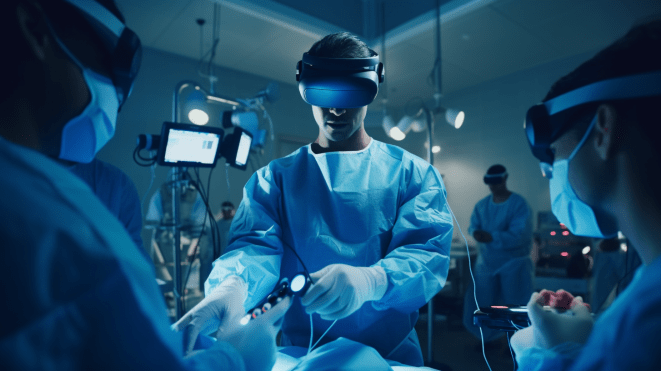Virtual Reality (VR) technology has been used in various industries for training, simulation, and entertainment purposes. However, in recent years, the medical industry has started to explore the benefits of Virtual Reality in medical training.
VR provides an immersive learning environment that enables medical professionals to learn, practice, and refine their skills without the risk of harming patients.
In this blog, we will discuss the advantages of VR in medical training.
10 Virtual Reality Medical Training simulations
1. ACLS Virtual Reality Simulation | Medical Training for Clinicians
ACLS Virtual Reality (VR) Simulation is a cutting-edge method employed for medical training designed specifically for clinicians.
This advanced technology is developed in collaboration with EMS agencies and aims to provide immersive ACLS training for first responders
The simulator allows clinicians to practice in a virtual, risk-free environment, where they can assume different roles, communicate, and perform tasks collaboratively, mirroring real-life clinical complexities.
This VR-based approach in ACLS training is seen as highly beneficial in medical education, offering adaptive learning practices and ultra-realistic animation, which are crucial for enhancing clinicians’ skills and preparedness in handling cardiopulmonary emergencies.
2. NHC - XR Clinic VR Medical Training Solution
The XR Clinic VR Medical Training Solution by NHC is a groundbreaking training tool utilizing virtual reality technology.
It is intended to train and evaluate the skills of medical staff and students in a risk-free environment, preventing any harm to patients
XR Clinic offers high-resolution graphics and allows learners to interact with virtual patients to develop their medical diagnostic skills.
This innovative solution is seen as a revolutionary way to enhance medical training by enabling users to experience diverse clinical scenarios and improve their diagnostic capabilities and overall medical proficiency.
3. VR Medical Training - Auscultation
VR Medical Training for Auscultation typically involves using virtual reality technology to simulate medical scenarios where medical professionals, especially students, can practice auscultation – the action of listening to sounds from the heart, lungs, or other organs, typically with a stethoscope, as a part of medical diagnosis.
This form of training allows for a risk-free learning environment where users can experience and interact with realistic clinical scenarios to improve their diagnostic skills and medical proficiency.
For example, some VR simulators for medical auscultation training can reproduce sounds belonging to the heart and lungs, helping students relate and identify various conditions through auditory learning.
Virtual reality in medicine serves as an essential tool to let students learn how to perform a number of tasks and procedures without any risk to real patients.
4. Shoulder Dystocia Virtual Reality Simulation
Virtual reality simulations in medical training, such as those for shoulder dystocia, are designed to create immersive learning environments where healthcare providers can practice managing medical emergencies in a risk-free setting.
Shoulder dystocia is a specific obstetric emergency where the baby’s head has passed through the birth canal, but one of the shoulders becomes stuck behind the mother’s pelvic bone, requiring specific maneuvers and medical interventions to resolve.
Health Scholars could potentially be utilizing advanced VR technology to simulate this condition, enabling medical professionals and students to practice, learn, and assess their skills in managing shoulder dystocia, thus improving their preparedness and response in real-life scenarios.
5. Surgical teaching, assesment and medical education in VR
Virtual Reality (VR) is significantly transforming surgical teaching, training, assessment, and medical education.
VR provides immersive learning experiences, allowing medical professionals and students to practice and manage medical scenarios in a risk-free setting.
It’s been adopted widely in surgical training, shown to decrease injury, increase the speed of operations, and improve overall outcomes.
The use of VR in surgical education is extensively researched, focusing on its effectiveness within surgical disciplines.
Many hospitals are leveraging VR to assist senior surgical residents in enhancing their surgical technology, proving effective in improving surgical skills and technology.
6. Different VR modules for VR Training
Learning through different medical VR modules involves utilizing immersive environments to safely perform and practice medical procedures multiple times, thus developing confidence and proficiency.
VR modules include various scenarios and use cases, allowing for visualization, replay, and training analytics, along with scenario editing and supplementary data load, enabling users to modify or customize scenarios as per their learning needs.
7. Experience Medical Procedures in VR
You can experience medical procedures in VR through various applications designed for healthcare and medical training.
VR is utilized for simulation of surgeries, anatomical study, and skills training. Medical professionals and students can learn and practice different medical procedures in a controlled and risk-free environment, enhancing their understanding and proficiency.
Virtual Reality offers scenarios and common situations for medical training, aiding in the visualization of complex medical conditions and treatments.
Additionally, it is also employed for patient treatment, medical marketing, and education, allowing individuals to experience medical procedures virtually, thereby improving patient outcomes.
8. Surgical Training In Virtual Reality by Precision os
Virtual Reality in surgical training is immensely beneficial as it provides a controlled and immersive environment for surgeons-in-training.
It allows the training and assessment of surgeons on new and infrequently performed procedures, reducing the risk of errors.
Through apps like Medicalholodeck’s TeamXR, trainees can connect with colleagues and mentors globally for real-time guidance and support, broadening learning opportunities and collaboration.
The use of VR surgical simulation has been demonstrated to improve operating room skills and reduce error risk, substantiated by prospective, randomized, blinded studies.
Additionally, the enrollment of participants with varying levels of gaming and surgical skills in VR surgical education applications can be advantageous for a more holistic evaluation and improvement of surgical skills.
9. NHC - XR Clinic VR Medical Training Solution
VR platforms for nursing are highly beneficial as they offer immersive and interactive learning environments.
They provide nursing students with the opportunity to practice critical thinking, decision-making, and patient care in a virtual setting, allowing for risk-free learning experiences.
Moreover, VR simulations help nurses not only to refresh their existing skills but also to acquire new ones, facilitating continuous learning and adaptation in the fast-evolving field of healthcare.
Although some studies conclude that VR is not more effective in improving skills than other simulation methods in nursing education, the immersive nature of VR can uniquely support the handling of anxiety and fears and improve clinical decision-making.
In conclusion, VR platforms are a valuable tool in nursing education and training, aiding in the development of essential skills and the enhancement of learning experiences.
10. Heart Rhythm VR-S-ICI implantation Preview Training
Virtual Reality training is immensely helpful for heart -s-icd implantation as it offers immersive learning experiences for healthcare professionals.
This technology enables medical practitioners to train and practice in realistic and stress-free settings, providing an opportunity to replicate true-to-life, high-risk scenarios for training purposes.
Heart Rhythm VR collections are developed to deliver immersive virtual reality training experiences globally to health care professionals, enhancing their understanding and execution of intricate medical procedures like -s-icd implantation.
This mode of training is relevant, engaging, and can be directly applied to patients’ daily lives, ensuring motivating cognition training.
Moreover, VR technology is evolving to aid in repairing hearts and is instrumental in making congenital heart disease surgery even more successful, supporting people in understanding and managing their conditions better
VR has finally broken the jinx and is changing all norms in the tech space. It is likely to grow exponentially as it promises a whole new dimension to customer experience.
ONKAR SHARMA Tweet
Advantages of VR in medical training :
1. Enhances Learning Experience
VR technology provides a unique and interactive learning experience that allows medical professionals to explore and understand complex medical concepts and procedures in a safe and controlled environment.
With VR, medical students and professionals can visualize and interact with three-dimensional models of human anatomy and medical procedures, making it easier to understand complex topics.

2. Reduces Risk
Medical procedures can be risky, and mistakes can lead to serious consequences for patients.
VR technology provides a safe environment for medical professionals to practice procedures and refine their skills without the risk of harming real patients.
This not only reduces the risk of medical errors but also reduces the cost associated with training and the use of resources in a traditional training setting.
3. Improves Retention
Research has shown that VR training improves knowledge retention and skill acquisition compared to traditional training methods.
This is because VR training provides a more engaging and immersive experience that stimulates the senses and allows for active participation.
Medical professionals who undergo VR training are better equipped to handle real-life medical situations because of their enhanced knowledge and skills.

4. Enhances Collaboration
VR technology enables medical professionals to collaborate in real-time from anywhere in the world.
This allows for the sharing of knowledge and expertise, and the ability to work together on complex medical procedures.
With VR, medical professionals can communicate in a virtual environment, share feedback, and discuss best practices, ultimately leading to better patient outcomes.
5. Adaptable to Different Learning Styles
VR technology is adaptable to different learning styles, making it easier for medical professionals to learn and practice medical procedures.
VR simulations can be customized to suit different skill levels and learning styles, ensuring that each trainee receives training that is tailored to their individual needs.
So will we be hauling ourselves to virtual parties in Vegas in the future? Perhaps! But we'll also be partying on the tops of mountains, at the bottom of the ocean, and on the surface of the moon.
DYLAN LOVE Tweet

Conclusion.
VR technology has the potential to revolutionize medical training and enhance patient outcomes.
With its immersive learning experience, reduced risk, improved retention, collaborative capabilities, and adaptability, medical professionals can learn and refine their skills in a safe and controlled environment.
As Virtual Reality technology continues to evolve, it is likely that we will see an increasing number of medical institutions incorporating VR into their training programs.


